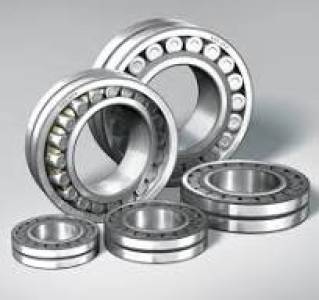Description
Spherical Bearings: Superior Rotation and Flexibility for Diverse Applications
Spherical bearings, also known as ball-and-socket bearings, offer exceptional rotational freedom and flexibility, making them ideal for a wide range of applications requiring multi-directional movement. Unlike traditional bearings constrained to a single axis, spherical bearings allow for angular misalignment and significant tilting, absorbing shock and vibration while maintaining smooth operation.
Key Features and Benefits:
- 360° Rotation: Enables complete rotational movement in all directions, providing unmatched flexibility in design and application.
- Self-Aligning Capability: Compensates for angular misalignment between shafts and housings, reducing wear and tear and extending bearing lifespan.
- High Load Capacity: Depending on design and material, spherical bearings can handle significant radial and axial loads, suitable for demanding industrial environments.
- Low Friction: Minimizes friction losses, leading to increased efficiency and reduced energy consumption.
- Easy Installation: Generally simple to install and maintain, reducing downtime and maintenance costs.
- Compact Design: Their compact size allows for integration into tight spaces and streamlined designs.
- Shock and Vibration Absorption: Effectively absorbs shock loads and vibrations, protecting other components in the system.
- Variety of Materials: Available in various materials such as steel, stainless steel, and various polymers to suit different application requirements, offering excellent corrosion resistance and durability.
Types and Specifications:
Spherical bearings are available in a variety of configurations, including:
- Rod End Bearings: Feature a spherical bearing at one end of a rod or stud, commonly used in linkages and connecting rods. They offer various sizes and thread types.
- Self-Aligning Ball Bearings: Designed to accommodate misalignment between the shaft and housing, often incorporating a spherical outer raceway. They are commonly used in applications requiring high load capacity and misalignment tolerance.
- Spherical Plain Bearings: Made from materials like bronze or PTFE, these bearings are suitable for applications where lubrication may be limited or impractical.
- Spherical Roller Bearings: Combine the self-aligning capabilities of a spherical bearing with the high load capacity of roller bearings. These are ideal for very heavy duty applications.
Specifications typically include:
- Inner and Outer Diameter: Defining the shaft and housing dimensions.
- Bore Diameter: The size of the shaft the bearing will accommodate.
- Static and Dynamic Load Ratings: Indicating the bearing's capacity to withstand static and dynamic forces.
- Material: Specifying the material used, influencing the bearing's strength, corrosion resistance, and operating temperature range.
- Operating Temperature: The range of temperatures within which the bearing can operate effectively.
Applications:
Spherical bearings find extensive use in various industries, including:
- Automotive: Suspension systems, steering linkages.
- Aerospace: Aircraft control systems, landing gear.
- Robotics: Articulated joints, manipulators.
- Industrial Machinery: Conveyors, material handling equipment.
- Agricultural Equipment: Tractors, harvesters.
- Medical Devices: Surgical instruments, prosthetic limbs.
Choosing the Right Spherical Bearing:
Selecting the appropriate spherical bearing requires careful consideration of factors such as load capacity, operating speed, misalignment requirements, environmental conditions, and cost. Our technical experts are available to assist you in choosing the optimal solution for your specific application. Contact us today to discuss your needs!
